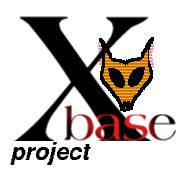
Fields and Strings
Chapter Updated 8/20/03
| Type | Size | Allowable Values | Schema Value |
|---|---|---|---|
| Numeric | 0 - 17(include sign and decimal point | + - . 0 through 9 | XB_NUMERIC_FLD |
| Character | 0 - 254 | Anything | XB_CHAR_FLD |
| Date | 8 | CCYYMMDD | XB_DATE_FLD |
| Floating Point | 0 - 17 (includes sign and decimal point | + - . 0 through 9 | XB_FLOAT_FLD |
| Logical | 1 | ? Y y N n T t F f (? - uninitialized) | XB_LOGICAL_FLD |
| Memo | Fixed length portion - 10 Variable length 0 - 32760 | Type III - Text Type IV - Anything | XB_MEMO_FLD |
